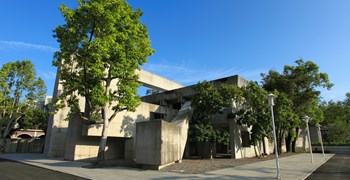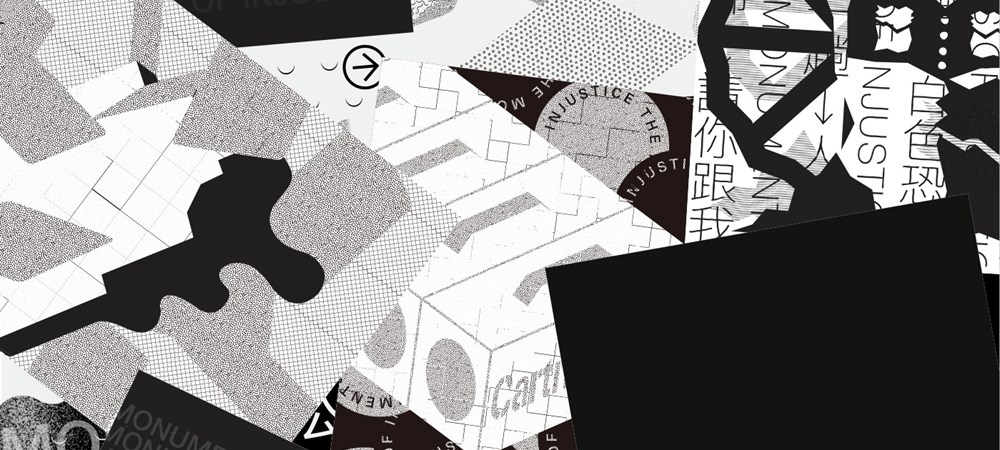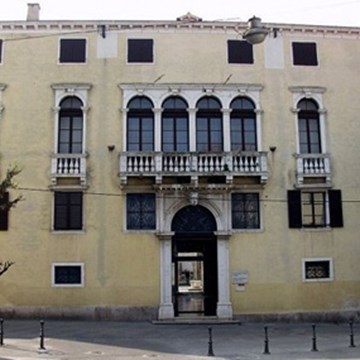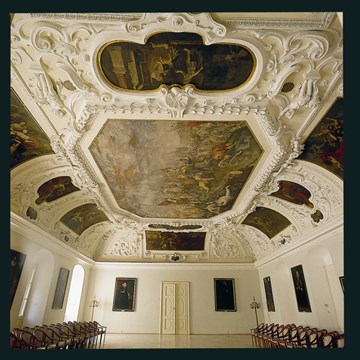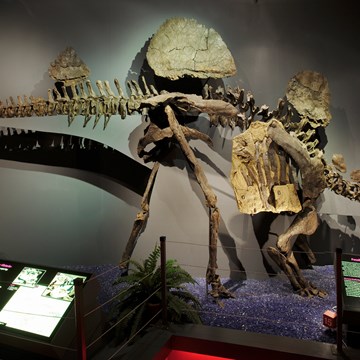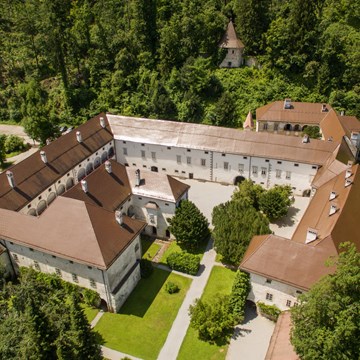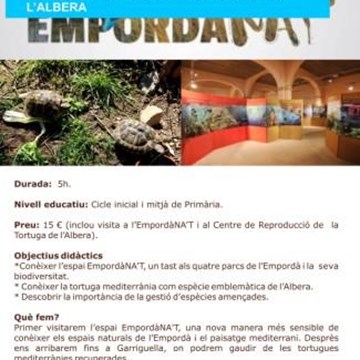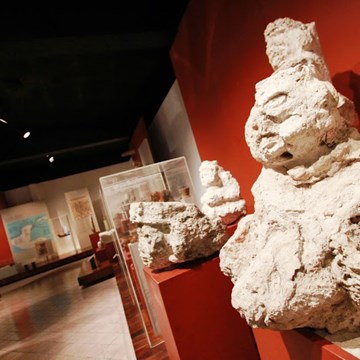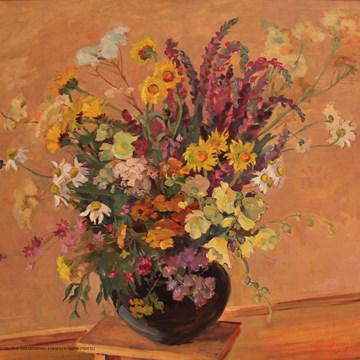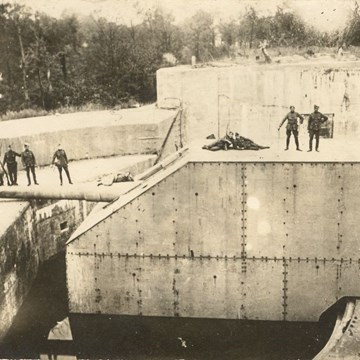Come with Us, Please — A Journey of Articulating Injustice and Shaping Collective Memory (with virtual exhibition link)
Come with Us, Please — A Journey of Articulating Injustice and Shaping Collective Memory
CHEN Kuan-yu
Born in Keelung, Taiwan in 1985, Chen is a visual artist and freelance director/ photographer. For years, he has been working in the fields of performing arts and visual arts. His works include commercials, feature films, shorts, documentaries, experimental videos and dancing images.
State (funded) Apparatus
→ Injustice sites Universal Design
→ Location
Installation: gyms, ubike stations,
bike paths
Video: an LED wall on commercial buildings, online advertisement
→ Target Audience
office workers, internet users, people in the school of hard knocks, advertising professionals
� Production Team
director/photographer/editor/
installation: Chen Kuan-Yu performance/choreography:
Pan Yu-hsun
sound design: Chun-Li Wang still photographer: Su Yu Han assistant: Juan Hsiang-wen,
Cheng Te-shou, Chen Shieh-en, Hung Chi-ni, Hsieh Ya-wen
Japanese translation: Anita Song
Since the White Terror Period, people have been discussing different approaches of Transitional Justice and even whether we need this. In this proposal, I try to invite visitors to start thinking about this topic with a video.
The project starts with the idea of absurdity. Actu- ally, empathy does not exist and the public in the present cannot “really” understand what had happened. Therefore, this project transforms the daily experience and makes use of the ordinary vehicle in the city. The language, movement, and equipment in the video installation are based on a real person that once existed.
If in the modern world, exercise is a kind of discipline with which people train themselves for their own existence, then in this work, what are the roles of people who operate the “State (funded) APParatus” and wears this extremely ridiculous hat?
In addition, when participating in the seemingly “real” sports activity, the visitors are indeed incorporating in the monument (the hat in the work). However, the purpose of this work is not to have the audience “experience” but to present the ridiculous system in that period through contemporary language. At the same time, visitors realize that the absurdity does not only exist in the past.
HUANG Min-chi
HUANG Min-Chi—Artist, writer, mother and outsider of Taiwan art circles. She has focused on Indonesian political and activist art since 2005.
There is no horse here!
→ Injustice sites
Machangding Execution Ground, Dongbenyuan Temple, Huashan Terminal, Zuoying Avenue Third Floor Iced Tea Room, Liuzhangli Mass Grave
→ Location
kindergartens, neighborhood bulletin boards, locations where people want to post
→ Target Audience
children from 5 to 7 and their parents, people who have a basic understanding of injustice sites
Therefore, we arrive at this wilderness where one even loses his voice to cry. This place, which is in the middle between “the heavy and dark history of injustice sites” and “two crazy children,” sounds like an unwise start. Indeed, some black forces even bring depression back.
When I feel the souls of the victims surrounding me, children are crying out loud “how boring this is!” The woodcut posters become a relief to my pressure.
The visitors are welcome to take the handmade posters back home. They only need to sign their names on the wall, which will become the proof of the transfer of power. Commercial art is like cement that covers the land. Only when we break it down and reach the soil beneath it can the seed buds start to grow. The wild grass with no economic value is also an embodiment of life.
WANG Holo / YING Victoria Yuan-Yi
Holo is a Taiwanese Documentary Filmmaker and Visual Tutor. He graduated from National Taiwan University and studied DocNomads Documentary Directing Master in the EU. His works were made in various regions across the globe, including Portugal, Hungary, France, Taiwan, and the whole China region. He worked in Taiwan Public Service and CNEX, and currently lives and works in Taipei as Director, Editor, and Teacher.
YING Victoria Yuan-Yi is born in Taipei. She loves introducing culture and history to people, traveling, and drawing illustrations. She graduated from the Department of History at National Taiwan University and has lived in Sweden and Japan. Currently,
she works as an exhibition coordinator, artistic designer, and walking tour guide. She has participated in projects like Unpack Taipei (Taipei Walking Tour, Taipei, 2017) and Reflections Along the River (NPM x Weiwuying, Kaohsiung, 2019). Her own creation includes illustration collection Yu Nan (independent publishing, Taipei, 2017) and Lamp Notes, “independent publishing, Taipei, 2018.” Her creation coms from her feelings and cares for “people.” Through different forms like curation and visual design, she intends to vividly and profoundly present text and stories that are rich in content.
The Path of Terror
→ Injustice sites
Dongbenyuan Temple, Qingdao
East Road Military Detention Center, Machangding Execution Ground, Oasis Villa, Neihu New Life Police Corps
→ Location
junior and senior high school classes
→ Target Audience
junior and senior high school students
“The Mechanic is the Message.” Also, the interactive and accessible “games” can capture and convey life experience on a deeper level. With this concept in mind, this work leads the players to role-play the victims and undergo the procedure of interrogation, trial, and execution in different injustice sites as the victims did. After this, players internalize that horrible experiences and start to empathize with the victims. The title of the game, The Path of Terror, signifies the immense change in life that the victims were forced to undergo. Also, it is hoped that the players can see the White Terror from a new perspective after playing.
Players will role-play victims in the White Terror with different backgrounds from different areas. They will be sent to different injustice sites across Taiwan, and be forced to follow a procedure of interrogation, trial, and enforcement in military institutions. They need to try hard to survive in the game. Events will be triggered in each move so players need to decide whether to cooperate or betray each other in order to survive. Every step toward the verdict is a test of one’s humanity and morality, through which players can deeply empathize with the physical and mental torture the victims suffered. After playing the game, teachers can provide additional documents and reading as teaching materials to extend students’ experience and knowledge about the White Terror.
WANG Shao-wei / CHUANG Yu-hsien
SHAOwei is a designer and illustrator. Her artwork can be regarded as a colorful and vivid match between photographic collages and digital vector art. Multi-award winning in Japan, and often cooperate with the drama and theater, board game, cultural and creative product, picture book, graphic design poster. During the past few years, she has been focusing on transitional justice, human rights, marriage equality, and Taiwan independence issues. Her artwork The Theme of Quell the Souls is about transitional justice and historical memory in Taiwan.
Kim's Dancewear Studio Designer: CHUANG Yu-Hsien. The major service of Kim's Dancewear studio is to create the unique, fascinating dresses for "Ballroom Dancing." Furthermore, we also have made a lot of different kinds of dresses for different purposes, such as formal dresses for evening parties, and dancing show.
White Terror in TAIWAN
→ Injustice sites
Qingdao East Road Military Detention Center, Criminal Investigation Corp, Liuzhangli Mass Grave, Ankang Guesthouse, Ankeng Execution Ground
→ Location
bookstores, cultural and creative markets, fusion cafes, non-mainstream music venues
→ Target Audience
people from 20 to 50 who love memes, Internet users who buy co-branded stylish T-shirts
White Terror in TAIWAN is a participatory project
The idea: Although martial law has been lifted, the ghost of the White Terror still lingers.
After 1987, will the authoritarians support democracy?
White Terror in TAIWAN is displayed in pup-up store of stylish T-shirts
Visitors make “confession” by selecting their favorite T-shirts and try them on in the fitting room. After this, they can receive “Injustice red envelopes.”
The process seems to be saying in a mocking way, “We can make a fortune through White Terror. Do you understand this?”
The T-shirts in the center of the exhibition are in yellow and in black, symbolizing the power of the single-party nation after 1949. The yellow one represents the “emperor-like” Chiang Kai-shek while the black one represents his successors.
On the stylish T-shirt are Four Auspicious Beasts with the body of authoritarians that exercise power. They represent state apparatus and secret agents who fabricated diaries that did not exist during the period of martial law.
The beasts on the front of the T-shirt shout meme-like riddles. On the back of the T-shirt is the source of and the answer to the riddle: The Injustice Sites.
The authoritarian regime is still lurking in the democrat-
ic society and waiting to fight back.
How can the history that is unable to be altered influence your future?
White Terror in TAIWAN invites visitors to put on the T-shirt and journey in our memory, so as to make the blurred clear.
SHI Yi-jung / LIU Sz-hui
SHI Yi-jung and LIU Sz-hui are advertising writers and have 7-8 years of working experience. They have cooperated with each other since 2012. They have won LongXi NOVA Taiwan Bronze in 2012 and Adfest Young Lotus Gold in 2014, and have also participated in works like “Pxmart Facebook Social Creative” and “Get Wise, with Hotel Royal Chiaohsi.”
� Production Team
visual design: TUNG Po-Ting TUNG Po-Ting, graduated from the Department of Creative Design
of National YunTech University, is currently a freelance designer.
Injustice Chocolate
→ Injustice sites
Intelligence Bureau, Dongbenyuan Temple, Qingdao East Road Military Detention Center, Oasis Villa, Machangding Execution Ground
→ Platform
news media, magazine advertisement, major content farms, and social networking websites
→ Target Audience
people who rarely pay attention to White Terror and social issues
Background—Many citizens have little idea of Transitional Justice although they believe Taiwan should have democracy and freedom. They are indifferent to the White Terror, and even avoid discussing this topic. The history, therefore, vanishes.
Strategy—We find that the topic of “White Terror” is too heavy for some people. In order to make the public more “interested” in understanding this topic, we start from the less known injustice sites, helping people to identify the space and know-how human rights were persecuted under authoritarian rule.
IDEA—Turning the darkness and bitterness of injustice sites into 100% “injustice dark chocolate.” Turning the unspeakable heavy topic into sweet chocolate. With our taste buds, we remember those injustice sites hidden in the city.
Chocolate Design—The chocolate derives its shape from the aerial view of injustice sites and its wrapping paper is designed as a map. The public can identify the location of injustice sites. There are also instructions, with which people can learn the functions and stories of the injustice sites in the White Terror Period.
Public Relations—We suggest that the product be promoted on Valentine’s Day in order to publicize the issue. Also, the promotion can feature “Black Valentine’s Day” and incorporate in some heart-broken love stories of victims to involve in more people.
HUNG Wei-lin
HUNG graduated from the Chinese Department of National Central University and École Supérieure d'Études Cinématographiques in Paris, France. She has worked as a TV screenwriter, film marketing planner, and TV program planner. Currently, she works as a video freelance, trying to write the hidden histories and piece together memory fragments through the image. In 2015, Like Father, Like Son was selected in the short film exhibition held by “Viewpoint” in Public Television Service. In 2017, she joined in the shooting project of the innocence documentary Ah Ying: The Extraordinary Ordinary. In 2019, she was selected in CREATORS Creative/Support Project of Taiwan Contemporary Culture Lab (C-LAB). During this period, she created the video installation Armed Forces to discuss issues about mainland soldiers as political prisoners in Taiwan White Terror Period.
Have You Seen Xie Zhi?
→ Injustice sites
North Branch, Dongbenyuan Temple, Navy anti-Communist Pioneer Camp, Military Police Detention Centre, Neihu New Life Police Corps, Oasis Villa
→ Location
advertisements on the train, MRT or HSR stations
→ Target Audience
public transportation passengers assistant: Hsin Pei-yi
“Perhaps one day, when you turn your head, you will catch a glimpse of Xie Zhi.” Many of the currently known “injustice sites in the White Terror Period of Tai- wan” were located in schools, houses, tearooms, and factories. They served as places for interrogation, trial, and detention. When purging the “insurgents,” the KMT government unabashedly brought various “non-daily” events into the “daily” life of ordinary people. Years later, these negative historical spaces that overlapped with people’s lives have undergone a round of stain cleaning as the city developed. Some of them were even torn down and used for different purposes. The new spaces, with their new functions and meanings, return to people’s daily life.
We usually get used to the non-dailiness in our daily life, and then we gradually forget this. The project selects six injustice sites and classifies them into six categories according to their present functions: food, clothing, housing, transportation, education, and entertainment. In long takes, visitors gaze at the daily life in these spaces, and the legendary creature “Xie Zhi,” which symbolizes fairness and justice, suddenly appears! When people’s eyes are trying to capture the creature, they are also disrupting official historical narrative and deconstructing the daily life that we take for granted. In this way, we have the opportunity to learn the historical memory of the “non-dailiness” in that period.
Shake
Graduated from l’École Nationale Supérieure des Arts Paris-Cergy, Shake’s practice mainly engages in cinematic writing and involves 工esearch into Asian geopolitics and archives of personal history, literature, and popular culture. The artist also focuses on the experimentation of narrative in systems of cinematic representation as well as relations and construction of collective/individual memory. The various directions in her multifaceted research are represented in an interconnected and mutually referencing way, which spans the virtual and the real while reflecting the construction of personal history propelled by the influential currents of state apparatus, education, culture, and global order. Shake’s works have been shown in Europe, Korea, the UK, and the US, etc. She has participated in exhibitions including Once Upon A Time—Unfinished Progressive Past, BACK TO TIANANMEN: MEMORY AS A FORM OF RESISTANCE A Special Exhibition for Commemorating the 30th Anniversary of Tiananmen Square Massacre, and Taiwan Biennial: Children on the Edge of Itchy-tectonics: Taiwanese New Experimental Films.
� Team Members
Chloé Yeh, Wesley Tsai, Amy Lai, Mathis Wei
sound recordist: Chun-yi Li
special thanks to Wei-chu Shih, Tzu-an Wu
Reconstruction of History: Who is he? Who am I?
→ Injustice sites
Security Bureau of Taiwan Garrison Command, Taipei Prison, North Branch, South Branch, Qingdao East Road Military Detention Center, Intelligence Bureau
→ Location
community activities or activities for students above senior high, with an audio guide
→ Target Audience
students or residents interested in local history
The focus of the project Reconstruction of History: who is he? Who am I? is “Tongbenyuan Temple,” a temple which once was situated in Ximending, Taipei. Local people under Japanese Rule used to learn about Buddhism and hold ceremonies here. After National Government took over Taiwan, it was renamed as the Security Bureau of Taiwan Garrison Command, a place for detention, imprisonment, torture, and even killing political suspects.
Publicly sold to a private consortium in 1967, it became a commercial building for shopping and entertainment purposes. The history of the site was then distorted or even erased by state violence. Here, the “injustice” of the injustice sites includes state violence persecution on human rights, illegal expropriation of land and the distortion and erasure of people’s memory.
This text, composed of different kinds of historical documents in different periods, invites students who are interested in the history of the city to read and reinterpret. When we restore the history of the site itself and the stories about and around it, we reconstruct the site in our memory.
By depicting the richness and complexity of injustice sites, pointing the diversity of the past, and challenging the current myths and beliefs, this project increases people’s interest in history.
* This proposal applies to those Japanese-style buildings taken over by the post-war National Government and then converted into spaces for other purposes.
PAI Che
PAI graduated from the Department of Foreign Languages and Literature and Graduate Institute of Taiwan Literature in NTU. He currently works as a screenwriter researcher in On Happiness Road Productions, working with director Sung Hsin-Yin in developing screenplays for Taiwan History. Also as a dancer, a photographer, cooperates with artists from different fields. In 2018, he joined the project of body theater with “Ta-chao Production” and served as the leading male dancer in his first duo dance Samsara. Recently he has cooperated with Chi-Wei Lin, Singing Chen, and Snow Huang in Interhuman Dynamic Coordination Models” (2017-18); Nylas, Wu-Han Chou in Taipei Transcripts: The Tagging Booths (National Human Rights Museum, 2019), and Anchi Ring in Sense of Site-specific (Waley Art, 2019).
"Passage"
→ Injustice sites
Dongbenyuan Temple, Fengshan Guest House, Dalongtun Detention Center, Qingdao East Road Military Detention Center, Machangding Execution Ground
→ Location
Any area of 4m x 3m around injustice sites used indoors and outdoors
→ Target Audience
Any visitor who is interested or uninterested
Do you know that the key to memory is made of the body?
Cross the door and come with me.
“Passage,” a project based on a historical investigation of injustice sites and victims’ memoir and oral history, invites visitors to experience via physical sensibility—walk through the dead land and empathize with victims’ feelings and memories. By walking through a passage, visitors experience the atmosphere of being totally controlled by the totalitarian regime and discover those corners that are unable to be described by language. In a body theater, visitors have a conversation with historical memory and scenes the moment they participate in the project.
The immersive “Passage” consists in elements of space, body, and sound, which incorporate locations where victims of the White Terror underwent interrogation, trial, and execution, the restricted physical and mental experience of the victims in the injustice spaces, and the low frequency and environmental recording that serve as an auxiliary audio guide.
“Passage” is designed as a detachable module that is easy to carry and unfold, which facilitates on-site demonstration in historical injustice sites. The ad- vanced version, “Passage in A Truck,” is “Passage” set in a container. Combined with teaching materials and audio projection equipment, it becomes a complete and movable educational space that promotes education across the island.
*This work is a portable module that can be displayed in different injustice sites. The verdict card of a specific injustice site can serve as the extra education material for different sites.
CHEN Melmel
Born in Taichung, Taiwan in 1984,
Melmel Chen graduated from the Department of Industrial and Commercial Design at the National Taiwan University of Science and Technology and obtained her MFA in Goldsmiths, University of London. Her artistic research has focused on pluralism, heterogeneity, and subject and object relationship within culture, history, and society, with an approach from aesthetics and biopolitics in the context of modernization, mainly through the mediums including photography, sculpture, video, and (site-specific) installation. She has participated in group shows in London, Norway, Korea, and Taiwan. In 2012, she won Red Dot Award: Brands & Communication Design, iF Design Award, Red Dot Design Award, Golden Pin Design Award, and XueXue Green Awakening Awards. In 2019, she was selected Kaohsiung Awards and Taipei Art Awards.
Currently, she works and lives in Taipei.
Unbearable Lightness
→ Injustice sites
Intelligence Bureau, Dongbenyuan Temple, Criminal Investigation Corp Detention Center, Oasis Villa, Machangding Execution Ground
→ Location
all possible places for currency trading, wallets, purses
→ Target Audience currency users
A coin, which serves as the medium for economic exchange in the market, is here transformed into a medium for information dissemination. Since the image on a coin’s surface can have a communicative function, a coin is not only a medium for value exchange but also a memorial object of history. While a monuments is big, a coin is small. It can be put in a pocket or placed in our palm. It can circulate and become a medium for communication with high reach. It can be collected and can also pass down the history it bears. It allows Tai- wan’s future generation to trace it back and it can even become an item for people in the future to discover through the archeological method.
In terms of the shape of the currency, in most cases, only one side can be seen at a time. When we inscribe the present and the past condition of one specific injustice site separately on each side of a coin, it creates the contrast and shows the relationship between the present and the past. A coin circulates among people of different genders, ages, races, identities, and areas. The patterns on a coin possess historical significance. It also has the meaning of “inscribing” a history of an era. With the meaning of a coin in a social context, I want to stress the importance of this period of history.
TSAI Ming-Yueh / CHIU Mu-Jung
Tsai Ming-Yueh and Chiu Mujung started their projects in Tainan in 2015. They are interested in how the constructed local history is deducted in reality. For them, there is always a difference between narrative and reality. Once we find it, we can open a new space for imagination. Recently, they have participated in projects like “Retrieving the Memory of Water in Fengyuan” (Water Resource Bureau of Taichung City Government, 2019), and “Urban Potential Chloroplast: Photosynthesis of Landscape in Shuijiaoshe” (Shuijiao Crafts Village, Tainan, 2019).
Tsai graduated from the Department of Materials Science and Engineering. Currently, he is engaged in image creation, exploring issues in industrial science and technology and the labor system.
Chiu obtained her bachelor in the Department of History of National Cheng Kung University. She is engaged in literature and historical research and writing. She is interested in rice culture and tomb and burial spaces. She has published a book “Rice in Your Hands".
� Production Team
sound design: LEE Chia-lin vocal: KUO Ling-Chun
App: Goodideas-Studio: CHEN Bo-Wei, KAO Song-Ju
The Location of Injustice Site
→ Injustice sites Universal Design
→ Location
tourist attractions that used to be injustice sites, schools having projects related to injustice sites
→ Target Audience
people who visit the museum
“Injustice sites” are places where improper investigation, torture, and even execution were conducted. Over time, most of them have been incorporated into the contemporary city landscape. Tainan Art Museum (Building 1), a Japanese building of cultural heritage, used to be a police station that has detained numerous Tainan political victims. Recently, a famous model even held her wedding ceremony here.
The inner and outer spaces of “injustice sites” have been redefined in the current space and time. It is inevitable that the functions of space in a city change over time, but how to properly interpret the history of the spaces in different contexts?
The Location of Injustice Site focuses on “the current situation of the city where the injustice sites are located” and the narrative position of the “injustice” history these sites represent.
In the proposal, there is an interactive guide system that combines “Introduction to Art Museum space” with “fictional stories of the White Terror.” Visitors must take pictures of the scene outside the museum in exchange for each tour (otherwise the story cannot develop). In the exhibition (hopefully in an art museum in the future) the scene outside the window of the Tainan Art Museum will be continuously uploaded. The images that refer to the outer space of injustice sites will serve as a way to disrupt the established and stable narrative context in the museum space
CHANG Judy
Born in Taoyuan, Chang graduated from the Department of Advertising and Public Relations of Fu Jen University. She enjoys listening to music and watching performances. Currently, she works as a video planner, mostly for documentaries.
They were here
→ Injustice sites Universal Design
→ Location
MRT station exits, flyers on campus
→ Target Audience
students, office workers, ordinary people
Every victim who suddenly disappeared in the White Terror is like a missing person. Every victim has his own dreadful route where he was arrested, trialed, tortured, and imprisoned. These routes are composed of a series of injustice sites, which may have already served for different functions or even disappeared now.
Therefore, I propose the project They were here. In this project, flyers will be distributed to attract people’s attention and make them curious about where these missing people have gone. Through the QR code on the flyers, the target audience can access the web pages and find the locations where the victims might have been and the unjust routes they were forced to take. They can see the suffering of the victims, learn more about the injustice sites buried in historical researches and articles, and the life stories that the victims wrote on this land with their own lives.
We are not only searching for missing people but also retrieving Taiwanese people’s memory of this land. We hope that more people can remember those people and therefore prove that they had existed (They are here). I believe this is the best way to remember them.
HUANG Sheng-Chun
Born in Taipei, Huang is a visual artist who works as a director, screenwriter, and photographer. He enjoys riding
a motorcycle around Taiwan and appreciating its beautiful scenery. He graduated from the Department of Journalism in National Chengchi University and is currently studying at the Graduate Institute of Studies in Documentary & Film Archiving at Tainan National University of the Arts. In the future, Huang intends to combine feature, documentary, and experimental images to create unique works about Taiwan. His works were selected in the 40th Golden Harvest Awards, general slate (2019) and the 40th Golden Harvest Awards, general slate (2018). He has won the First Prize in CHT MOD microfilm competition (2018), the Excellence Award in CHT MOD microfilm competition, general group (2017), the Honorable Mention Award in Ministry of Culture “Story Taiwan (2016), and the Honorable Mention Award in Agency of Corrections “Here We See Love” microfilm competition (2015).
� Production Team
Video Production
Actor: HUANG Kai-Hsin Lighting: LEE Ke-mo
Photography Assistant: KAO Shih-yu Graphic Design: LU Wan-Jou
Aerial camera: CHEN Chih-ting Remix & Music: CHANG Shao ting Dimming: YANG Shih-cheng Equipment: Origin Sun Studio
Exhibition
Graphic Design: LU Wan-Jou Assistant Manager: HUANG Ho Inscription: JANG Yu-Jung
Xindian Riverbank Apartment for Sale
→ Injustice sites
Machangding Execution Ground, Kawabata Bridge Execution Ground, Shuiyuan Rd Execution Ground, Start of Shuiyuan Rd Execution Ground, Ankeng Execution Ground
→ Location
Advertisement: advertising billboard on the buildings around Xindian River Installation: riverside park
→ Target Audience riverside park users
Having a nice apartment that overlooks a river is probably the lifelong dream of many people. The comfortable space near the riverbank allows people in Taipei to find a temporary escape from the hustle and bustle. Areas including Machangding Execution Ground, Kawabata Bridge Execution Ground, Start of Shuiyuan Rd Execution Ground, Shuiyuan Rd Execution Ground, and Ankeng Military Prison are among the most popular locations for construction projects along Xindian River in recent years. However, seemingly excellent locations for living, they were execution grounds that the public shied away from during the White Terror Period.
With people longing for a riverbank apartment, Xindian Riverbank Apartment for Sale establishes virtual construction project advertisements in five injustice sites along the Xindian River. People will be attracted to the advertisement and then understand more about the history of these sites that used to be execution grounds.
This work is demonstrated in the form of both video and model display. The video installation first presents five seemingly ordinary construction commercials, and then an executed political prisoner shows up. This intertwines the present with the past. The model provides an outline of the left and right bank of Xindi- a River and marks the locations of the five execution grounds. Visitors can understand the space and position of prison institutions moving from city center to suburban area in the mid-1950s.
In Machangding Execution Ground, small mounds used to cover up the bloodstain of execution are everywhere. It is hoped that now we can use a shovel to dig out the unknown secrets buried in the Xindian River and let people face the forgotten history of this land.
Exhibitions and events
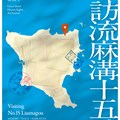
Visiting No. 15 Liumagou: Memory ‧ Place ‧ Narrative
Permanent exhibitionVisiting No. 15 Liumagou: Memory ‧ Place ‧ Narrative Sandy Hsiu-chih Lo “No. 15 Liumagou" was once the location of the common domicile of political victims detained on...
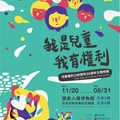
CRC 30th Anniversary Exhibition (with virtual exhibition link)
Permanent exhibitionCRC 30th Anniversary Exhibition The Convention on the Rights of the Child (abbreviated as the CRC) was promulgated on November 20, 1989. The Convention was incorporated into the domestic law of...

What?! Why Me?! (with virtual exhibition link)
Permanent exhibitionWhat?! Why Me?! “Freedom of Speech” is a part of basic human rights, but during the period of martial law in Taiwan, there were more than thousands of imprisonment cases due to speech, text, or...
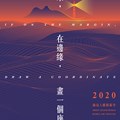
If on the Edge, Draw a Coordinate: the 2020 Green Island Human Rights Art Festival (with virtual exhibition link)
Permanent exhibitionGreen Island Human Rights Art Festival 2020 In 2019, NHRM first tried to organize the "Green Island Human Rights Art Festival" using contemporary art as a medium. It was well received and was...
Activities from this museum
We don't have anything to show you here.
